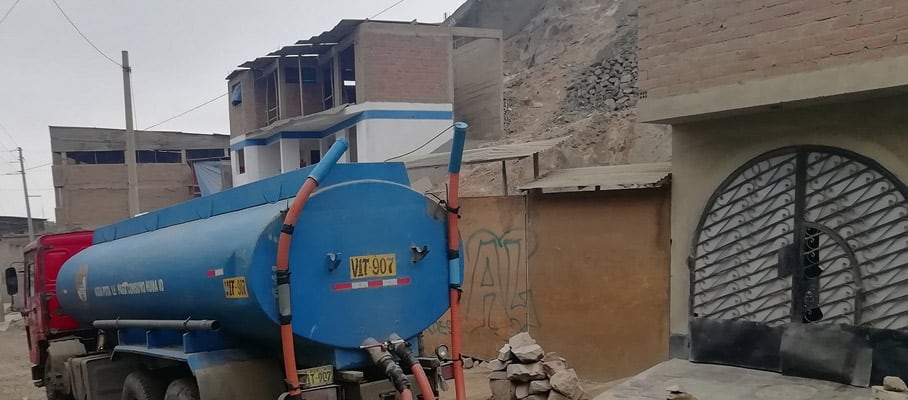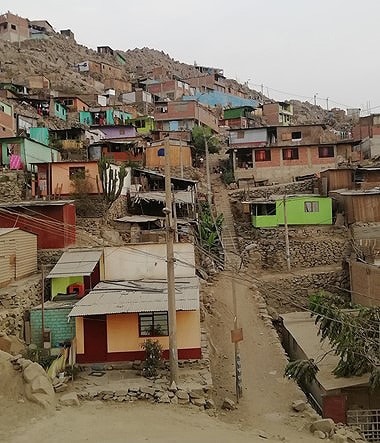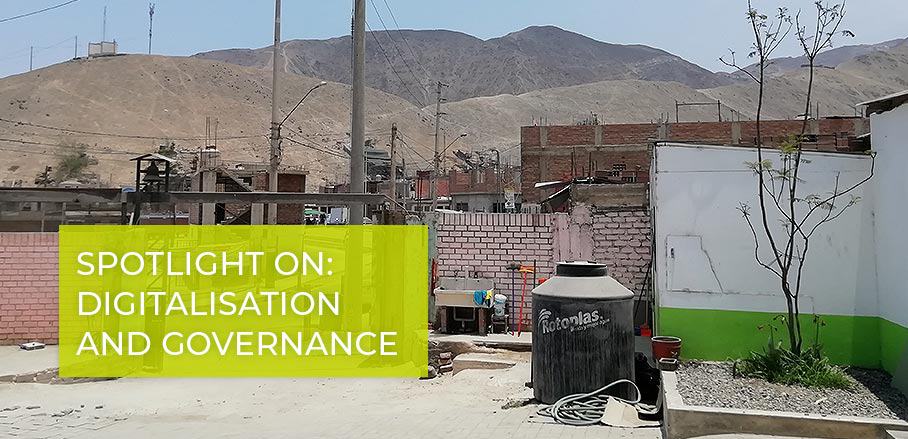To Advance Water Justice, We Need Data Justice
Set in the desert and with large numbers of unregistered citizens, water justice is a major concern in Lima, Peru. Fenna Imara Hoefsloot outlines how the city’s digital water infrastructure excludes parts of the population from reliable water supply.
Marisol lives on the edge of Lima together with her husband and two sons, and, despite having built her house more than 20 years ago, she is not connected to the piped water infrastructure but buys water from a truck passing by twice a week. Yet, this does not mean she does not have running water in her home. Through an ingenious construction of tanks, pumps, and hoses, she has managed to construct her own system, allowing running water in her kitchen, bathroom, and patio. Moreso, she automatically collects water from the sink to be re-used to flush the toilet, making sure that she does not waste a drop.
In a sense, Marisol is an engineer, water administrator, and consumer at once. Nevertheless, her work, knowledge, and consumption are not represented in any form in the formal data about the water infrastructure and distribution in Lima.

Truck with water tank © Fenna Imara Hoefsloet
The use of digital technologies for water management and the focus on data-driven decision-making have been welcomed in Lima. Over the past years, SEDAPAL, Lima’s public water company, has implemented a supervision, control, and data acquisition system (SCADA) to manage the water flows within the city and deliver potable water to Lima’s formal residents. With the help of this digital infrastructure, SEDAPAL has reduced non-revenue water significantly, improved the billing system for residents, and can respond faster to break-downs or leakages in the system. In a city of more than 11 million people built in a desert, this is extremely important.
Nevertheless, as Lima is characterised by high degrees of informality and unplanned urban growth, many people such as Marisol are not only underserviced in the water infrastructure but also underrepresented in the digital information system. This begs the question, as the implementation and use of the digital infrastructure for water management is steadily increasing, and datafication of the water infrastructure progresses, what knowledge are we gaining, and what are we overlooking? Specifically, if we consider water justice not only as the fair socio-economic distribution of water but also as the acknowledgement of plural perceptions, experiences, and normative approaches to water governance, it is vital to think about what knowledge we base our water governance decisions on.
The Implications of Being Underrepresented
What knowledge are we gaining, and what are we overlooking? One of the first answers to that question is that we overlook the water needs and uses of people consuming water in various degrees of informality. This primarily refers to residents who depend on water trucks, communal taps, or neighbourly help for their access to water.

Newly urbanised area in Lima, Peru © Fenna Imara Hoefsloet
Residents of unplanned neighbourhoods, generally built on the steep and rocky hills surrounding the city, often do not have proof of residency and are therefore also not eligible to apply for a water connection and are not visible in the water data. SEDAPAL is trying to overcome this gap in cadastral data by using drones and automated image analysis to map newly urbanised areas. Despite these innovations, they are always one step behind the city’s rapid expansion.
In addition, not all households in Lima have a household water meter installed. Aside from newly built houses that do not have a meter installed yet, or residents that refuse to have water meters installed due to a lack of trust in the technology and SEDAPAL, the installation of water consumption meters is hampered by the fact that their design does not match the diversity of living arrangements in Lima. The household meter is designed for single-family homes. Yet, in the historical zones of Lima, many people live in multi-household condominiums (quintas) or buildings that have a single water entry point. Hence, to measure the water consumption per household, communities are required to adapt their communal water distribution system into a single household connection and change their water governance practices.
These gaps in the data have important consequences for urban water consumers. Unregistered water consumers generally pay more per litre, have less security over the quality, reliability, and continuity of the water service, and, if registered but unmetered, are rationed by the water provider. Moreover, not being registered with SEDAPAL as a consumer deprives you of logging complaints about the lack of service from the state because they do not have a customer service number. In conversations with Marisol, it becomes apparent how being invisible leads to frustration and stress for her and her community. Within her neighbourhood, the time and money consuming process of trying to receive potable water has caused a rift in the community, leading to a situation where one part of the street does have potable water and others, like her, are still not connected.
We have to keep in mind that ‘not seeing’ can be strategic from the state’s perspective. If there is no data, there is also no way of telling whether or not the state complies with its mandate to provide water to all its residents. In other words, their water rights are selectively ignored and made invisible with the datafication.
Towards Data Justice in Water Governance
Therefore, returning to our question, we find that datafication, despite its potential, still means making some issues visible, and in effect, making others invisible. The datafication of the water infrastructure is not only the codification of how much water is received, consumed, or lost, but also the creation of knowledge about people, places, and issues. Data-driven water governance, which focuses on quantifiable information and increasing efficiency, tends to overlook labour and expertise from residents who work within the water infrastructure to overcome the service gap. Their consumption and efforts are registered in the many databases of the water system as illicit rather than victims of a poorly functioning infrastructure.
A more inclusive way of digitalising Lima’s water infrastructure should be based on the needs of residents. This entails that it has to represent their daily experiences and offer opportunities to make their voice heard while acknowledging them as local experts. To do so, and for datafication to contribute to water justice, it should follow the principles of data justice, meaning that people have autonomy and self-determination in sharing data, the digital infrastructure is embedded in public decision-making, and contributes to overcoming structural inequalities in the socio-technical system.
Water infrastructure is often thought of in terms of water dams, water treatment plants, pipes and sewerage systems. Instead, I urge readers to think about water infrastructure beyond its material features and consider people, landscapes, and knowledge as part of the infrastructural system. In relation to these immaterial elements of the infrastructure, the technology serves a purpose. From this relational perspective, we can look at the implementation of digital technologies and how they may create intended and unintended consequences in advancing water justice in the city.
- To Advance Water Justice, We Need Data Justice - 3. February 2022
